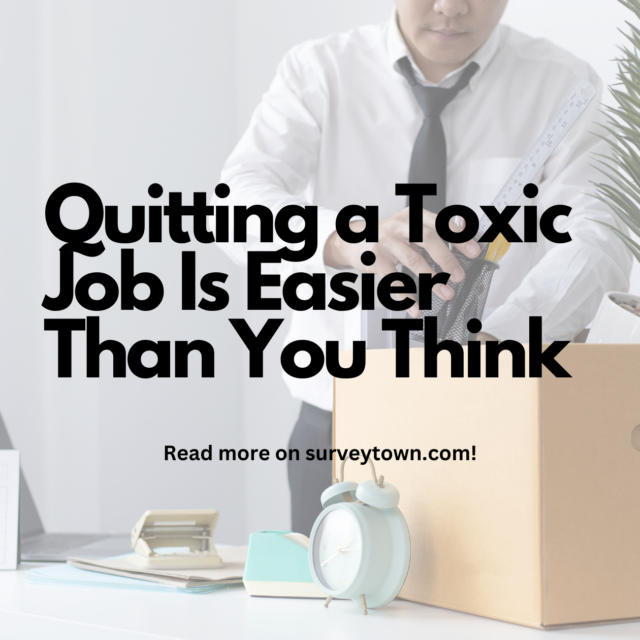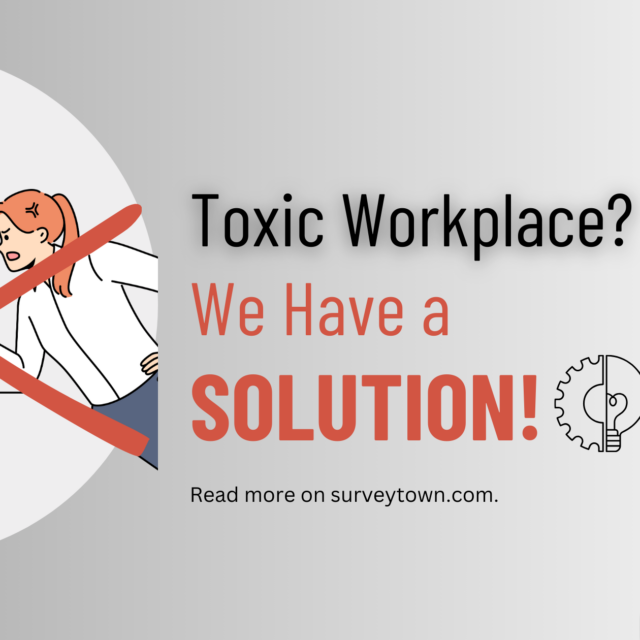Saying goodbye to a toxic workplace is the first step toward healing. However, it requires careful consideration and strategic planning. By understanding the signs of toxicity, knowing when and how to leave, prioritizing self-care, and seeking out healthier work cultures, you can embark on a journey to a more satisfying professional life. Our guide will help you do that and answer any questions you may have.
Also, be sure to read this article on identifying and handling a toxic workplace!
Identifying the Signs of a Toxic Work Environment
- Overwhelming stress and pervasive negativity: Constant stress, anxiety, and unhappiness indicate a toxic atmosphere.
- Lack of support and respect: Toxic workplaces often lack support from management or coworkers, leading to belittlement or disrespect.
- Excessive micromanagement: Frustration and demotivation arise when managers control every aspect of your work without granting autonomy.
- Ineffective communication channels: Poor communication breeds misunderstandings, conflicts, and unnecessary stress.
- Unfair treatment and favoritism: Consistent preferential treatment or mistreatment of certain employees signifies an unhealthy work environment.
Recognizing these signs is crucial for understanding their impact on your well-being and shedding light on the role management plays in fostering toxicity.
The True Cost of Staying in a Toxic Work Environment
We understand firsthand the detrimental effects that a hostile workplace environment can have on your career growth and overall well-being. It’s crucial to recognize the signs and understand why leaving may be the best decision for you.
- Impeding Your Career Growth: Toxic workplaces hinder professional development and limit future opportunities.
- Straining Personal Life and Relationships: Constant stress, negativity, and conflicts at work can lead to anxiety, depression, and strained relationships.
- Long-Term Impact on Health and Well-Being: Prolonged exposure to toxicity can result in mental and physical health issues, including burnout syndrome.
Recognize the costs associated with staying in a toxic workplace and prioritize your well-being.
Steps to Take When Leaving a Toxic Job
1. Establish Financial Security
One of the first steps you need to take when leaving a toxic job is to establish financial security. It’s crucial to have a solid safety net in place, so start by saving at least three to six months’ worth of living expenses. This will provide you with peace of mind and give you the freedom to make thoughtful decisions about your next career move.
2. Craft an Impressive Resume and LinkedIn Profile
To successfully transition from a toxic workplace environment, it’s essential to present yourself in the best possible light. Polish your resume and optimize your LinkedIn profile, showcasing your skills, accomplishments, and experiences that make you stand out as a top candidate for potential employers. By doing so, you’ll enhance your visibility within professional networks and increase your chances of landing interviews.
3. Expand Your Network and Explore New Opportunities
Leaving behind a toxic work culture can be liberating but also challenging if you’re unsure where to go next. To navigate this transitional period effectively, reach out to professional contacts who can offer guidance or connect you with new opportunities. Attend industry events or join online communities related to your field; these platforms are excellent resources for discovering job openings and gaining insider information on companies that prioritize employee well-being.

Leaving a toxic job requires careful planning and consideration—it’s not something that should be rushed into without proper preparation. Take the time needed for self-reflection and research before making any hasty decisions about quitting or transitioning careers entirely.
Navigating the Exit Process
When it’s time to leave a toxic workplace, it’s crucial to take the following steps:
1. Resigning Professionally
- Start by arranging a meeting with your supervisor or HR representative to formally submit your resignation.
- Craft a concise, polite, and professional resignation letter expressing gratitude for the opportunities you’ve had during your tenure.
- Offer assistance during the transition period by outlining any pending projects or tasks that need attention after you leave. This proactive approach demonstrates your commitment to ensuring a smooth handover and leaves behind a positive impression.
2. Handling Exit Interviews and Potential Counteroffers
- Exit interviews provide an opportunity for employees leaving toxic work environments to share their experiences constructively without being overly negative or confrontational.
- Use this chance to explain why you are quitting while offering valuable feedback on areas that could be improved within the company culture or work environment.
- In some cases, employers may present counteroffers in an attempt to retain valuable talent. If faced with such offers, carefully evaluate whether they address the underlying issues that led you to consider leaving in the first place. Remember that true change requires more than just financial incentives; it should involve tangible improvements in workplace dynamics and toxicity levels.
3. Ensuring a Smooth Transition for Your Team
- Leaving behind colleagues who may still be working in a toxic environment can be challenging emotionally, but maintaining open communication is key during this adjustment period.
- Offer support and lend an empathetic ear as they navigate their own journeys within the organization.
- To facilitate a seamless handover of responsibilities, document important processes and procedures before departing from your role completely. By doing so, not only do you ensure continuity but also empower your team members with the essential knowledge.
Remember, leaving behind toxicity takes courage and professionalism. By following these tips, you can navigate the exit process with professionalism and set yourself up for a brighter future in a healthier work environment.
Recovering From a Toxic Work Environment
A hostile workplace can have detrimental effects on your mental and physical health. Allow us to guide you through the process of leaving such an environment and finding solace after quitting.
1. Seek Professional Guidance if Necessary
If you’re feeling overwhelmed or struggling to cope with the aftermath, consider seeking therapy or counseling. These professionals can provide invaluable guidance as you process your experiences, heal emotional wounds, and regain the confidence that may have been shattered.
2. Rebuild Your Self-Confidence and Self-Esteem
Engage in activities that bring you joy and invest in yourself to rebuild your sense of worthiness and self-belief. By doing so, you’ll gradually rebuild your sense of worthiness and belief in your abilities.
3. Learn Valuable Lessons From the Experience
Reflect on what you have been through, and use it as an opportunity for growth by identifying valuable lessons learned along the way. Armed with these insights, you can make informed decisions when considering future job opportunities, ensuring that history doesn’t repeat itself.
4. Establish Firm Boundaries for Future Employment
One of the most effective ways to protect yourself from falling into another toxic work environment is by setting clear boundaries right from the start. Define what behaviors are acceptable within a workplace culture aligned with your values before accepting any new job offers or making career moves.
Tip: Recovering from a toxic work environment requires time, patience, and consistent self-care practices. Surround yourself with supportive individuals as you embark on your journey of healing and growth.
Discovering a More Fulfilling Work Environment
Here are our top ten secrets to identifying a positive workplace culture during your job search.
- Research organizations that prioritize employee well-being, growth opportunities, and open communication.
- Pay attention to recurring themes in reviews to gain insights into turnover rates and management practices.
- Ask potential employers about their policies regarding work-life balance to ensure a healthy work environment.
- Observe how teams interact during interviews to identify collaboration, respectfulness, and support among colleagues.
- Listen to your intuition during interviews and office visits to determine if the workplace aligns with your aspirations.
By following these steps and approaching your job search with intentionality, you can find a workplace that fosters positivity, growth, and satisfaction.



